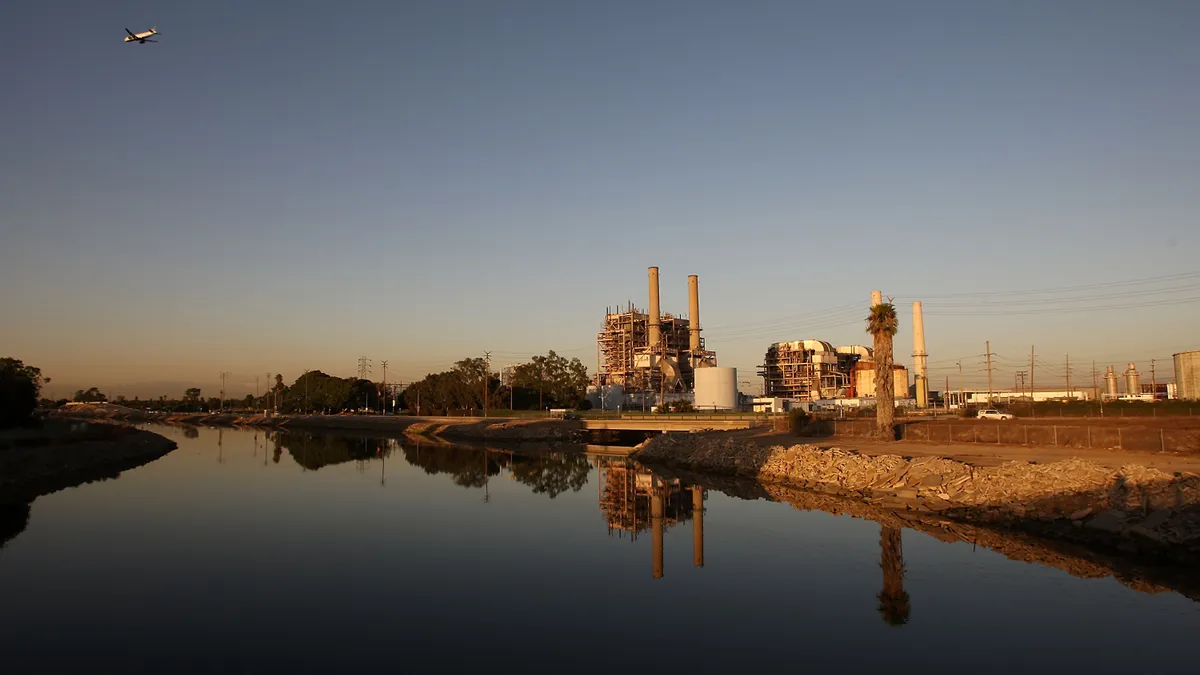Dive Brief:
-
The California Public Utilities Commission on Thursday launched a new rulemaking to regulate the state's transition away from natural gas, addressing issues related to stranded assets and unfair cost shifts among ratepayers.
- Regulators will also look into crafting updated reliability standards for gas systems, in light of a string of safety, operational and reliability-related incidents that have plagued California's gas utilities over the last decade.
-
Environmental advocates praised the rulemaking as a timely move, considering the wave of California cities adopting natural gas bans. But Jon Switalski, executive director of Californians for Balanced Energy Solutions, which represents gas users, questioned whether regulators have "carefully considered the costs to society" that would come from treating electrification as a silver bullet
Dive Insight:
California state and municipal greenhouse gas emission laws will drive down demand for natural gas over the next 25 years, according to the CPUC. The agency has also been grappling with multiple safety and operational issues on California's gas system.
In 2010, a PG&E gas pipeline exploded in San Bruno, killing eight people. Five years later, a leak was discovered at the Southern California Gas-operated Aliso Canyon storage field. And beginning in 2017, two SoCalGas pipelines have been out of service or operating at reduced pressure, leading to constraints on the system.
The operational issues also led to steep spikes in gas prices in local and wholesale electricity markets. At one point, during a heatwave in 2018, prices at a Southern California market increased from an average of $3/MMBtu to $40/MMBtu.
"The goal of this rulemaking is to provide a forum where the commission can consider the challenge of how do we ensure the safety and reliability of natural gas infrastructure in the state, as we consider this long-term strategy to manage the state's transition away from natural gas-fueled technologies to meet these decarbonization goals," CPUC Commissioner Liane Randolph said at the agency's meeting Thursday.
The rulemaking will be conducted in two tracks, with the second focused on developing this long-term strategy. Specifically, the commission intends to pinpoint what kind of gas infrastructure portfolios will be best suited for the state's utilities; how much of it is needed through 2045 and beyond; and how to address the short-term reliability need for gas in the IRP process.
In the first track of the proceeding, the commission intends to review current reliability standards, and look into rules around long-term contracting and tariff changes, among other things. Pacific Gas & Electric, San Diego Gas & Electric and Southern California Edison are among the utilities named as respondents to the rulemaking.
"From our perspective, what was interesting and what we appreciate [the CPUC] getting ahead of is how we should be thinking about the gas system in an era of rapidly declining gas demand," Matt Vespa, staff attorney with Earthjustice, told Utility Dive.
Reaching California’s climate goals will necessitate electrifying buildings, according to Vespa, which raises questions over which customers are left to pay for the gas system and how to avoid unneeded investments. Part of the challenge will involve executing that transition without leaving behind low-income and other vulnerable customers.
"The need for this rulemaking is clear. As California reduces gas use in buildings, the pool of gas customers who are going to be footing the bill for the gas system is going to shrink," Michael Colvin, director of the Environmental Defense Fund's California energy program, said at the CPUC meeting, adding that proactively managing this transition "will be a win for both customers and for the environment."
But Switalski said that while Californians for Balanced Energy Solutions supports the state's carbon reduction goals, it differs with the CPUC on how to get there.
"We believe that pure electrification is an ideological, rather than pragmatic way to reach those carbon reduction mandates, and we believe that there should be an increasing role for renewable natural gas and eventually, one day, hydrogen," he said.
"Electrification is something that sounds good in the halls of San Francisco and Sacramento," but regulatory policy around it doesn't take into account the costs that will fall on customers, according to Switalski.
A spokesperson for the American Gas Association told Utility Dive in an email that "any realistic plan to continue toward our shared goal of emissions reductions and a clean energy future must have natural gas as a foundation."
Clarification: This article has been updated to clarify that projections of declining natural gas demand come from the CPUC. Reaching California's climate goals will necessitate electrifying buildings, according to Vespa.














